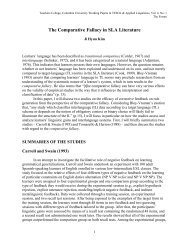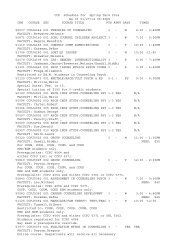UNICEF Mongolia - Teachers College Columbia University
UNICEF Mongolia - Teachers College Columbia University
UNICEF Mongolia - Teachers College Columbia University
Create successful ePaper yourself
Turn your PDF publications into a flip-book with our unique Google optimized e-Paper software.
CHAPTER 4: THE IMPLEMENTATION OF THE 2007 SALARY REFORM AT SCHOOL LEVEL<br />
1<br />
2<br />
3<br />
4<br />
5<br />
6<br />
4.3.3. Additional Teaching Hours by Location<br />
This study solicited informaon on addional teaching hours for each of the four terms of the school<br />
year. It appears that the greatest number of addional teaching hours occurs during the second term.<br />
Table 14 presents the breakdown of addional teaching hours by locaon for the second term of school<br />
year 2010/11. One interesng finding was that more than half of the teachers employed at city schools<br />
(53.7 percent) teach 20-22 hours per week. This is a significantly different work paern than in soumcenter<br />
and aimag schools, where most of the teachers work only 19 hours. In other words, teachers<br />
in city schools connue to have a greater chance of earning addional income by taking on addional<br />
teaching hours. As opposed to 2005, when PETS <strong>Mongolia</strong> data were collected, teachers in city schools<br />
currently teach an average of only one or two addional hours more than their counterparts in aimag or<br />
soum-center schools. With the excepon of two outlier schools in Omnogobi aimag where teachers work<br />
excessive hours because of teacher shortage, schools only very rarely assign to teachers more than four<br />
addional teaching hours per week. Thus, even the number of addional teaching hours significantly<br />
varies by locaon of the school, but the discrepancy is no longer as large in terms of weekly hours and<br />
monetary value to make such a difference in terms of teaching quality and teacher salary.<br />
4.3.4. Additional Income from Bonuses by Location<br />
TEACHERS IN MONGOLIA: AN EMPIRICAL STUDY ON RECRUITMENT INTO TEACHING,<br />
PROFESSIONAL DEVELOPMENT, AND RETENTION OF TEACHERS<br />
As will be explained in further detail in Chapter 5, the outcomes-contract bonus is the only bonus that is<br />
paid from the school’s educaon fund. Naturally, large schools are able to save more money in educaonal<br />
systems that use per-capita financing than small schools. The queson therefore is the following: is it<br />
more likely for one to receive an outcomes-based bonus if one teaches at a city or aimag-center school,<br />
rather than if one is employed as a teacher in a soum-center school? Table 15 compares bonus payments<br />
for outcomes-contracts in the three different types of schools.<br />
Given the scarcity of funds in soum-center schools, it is surprising that soum-center schools are the ones<br />
that hand out bonuses for the outcomes-contracts more generously than schools in aimag-centers or<br />
cies. Almost half of the interviewed teachers in soum-schools (19 out of 41) received an outcomesbased<br />
bonus in the past school year.<br />
70



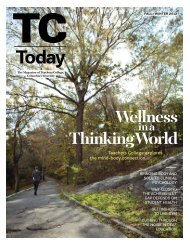

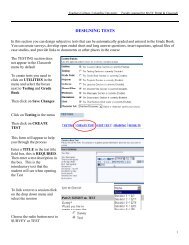


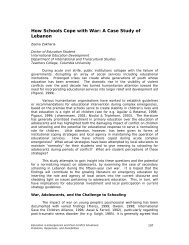
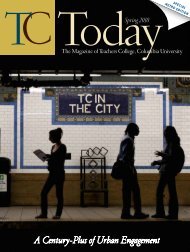
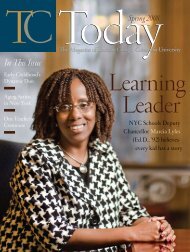



![TC Tod[...].pdf - Teachers College Columbia University](https://img.yumpu.com/27074883/1/190x252/tc-todpdf-teachers-college-columbia-university.jpg?quality=85)

